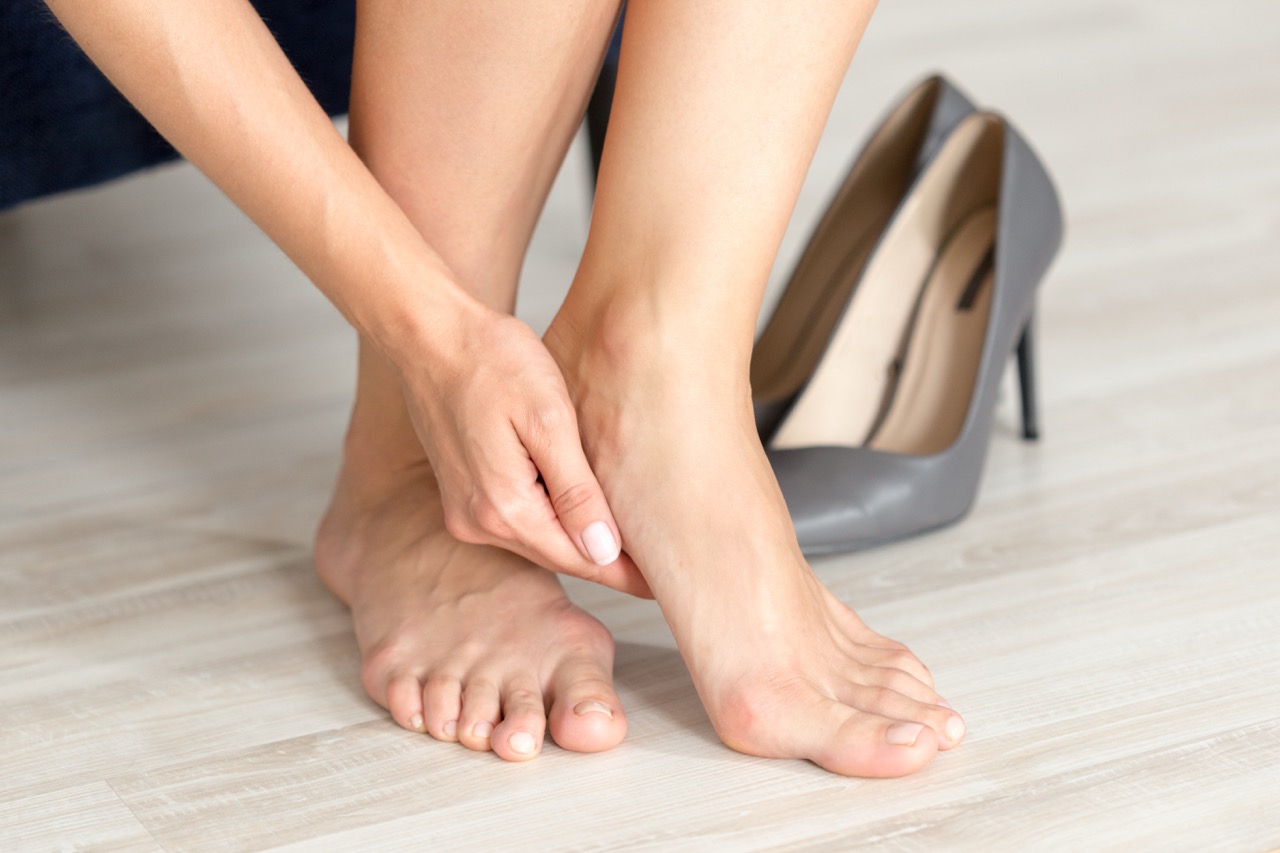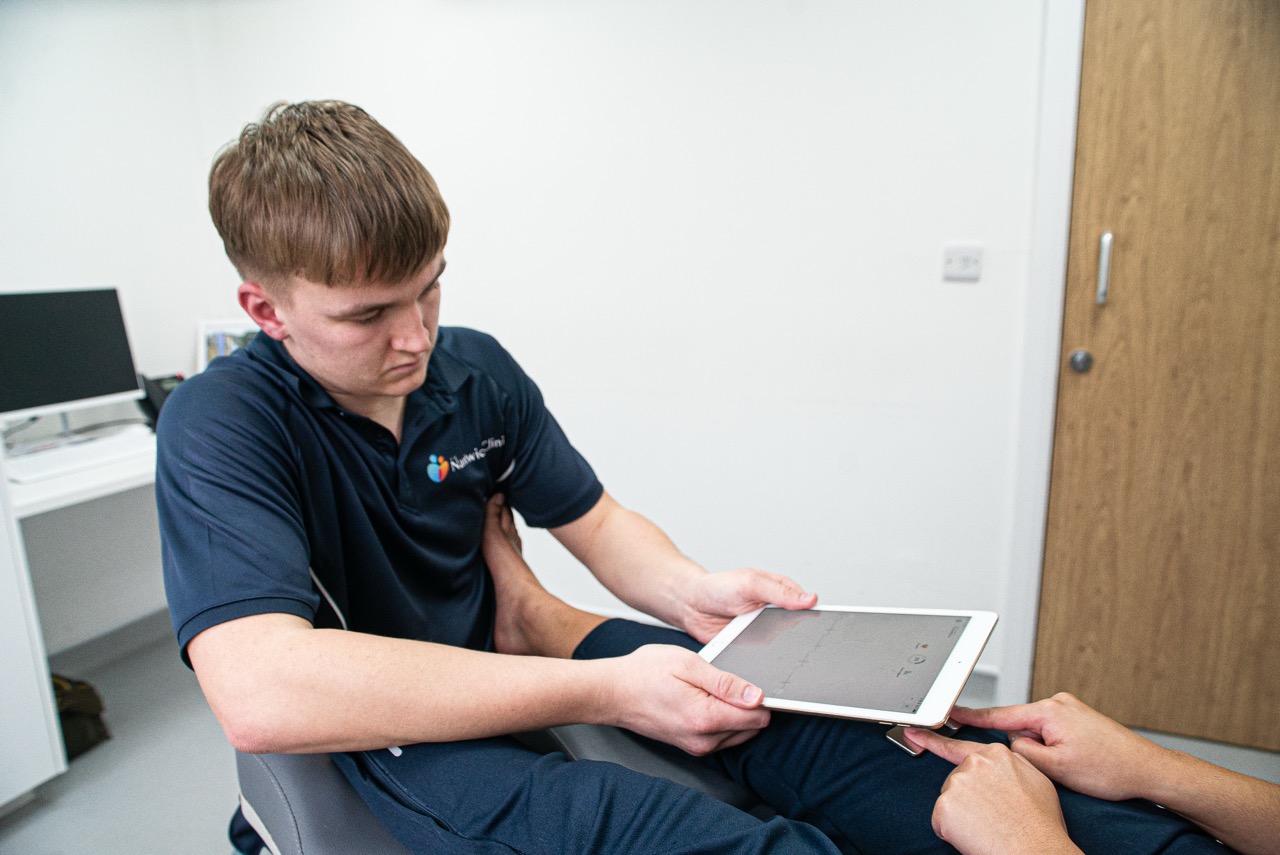Join The Nantwich Clinic Club to keep up to date with news and offers!
Sign UpDiabetes may affect your feet in a number of ways. One of the early changes can be loss of sensation in the feet, often starting at the toes. You may experience a cotton wool like feeling or numbness in your feet – this is called neuropathy. The chances of losing feeling in your feet increases with the number of years that you have the disease.
Research suggests that up to one in three people with diabetes have some loss of sensation. The onset of neuropathy is gradual, and often people who develop this complication are unaware of it in the beginning. It frequently occurs between 7 and 10 years of having diabetes, although in some cases it can occur sooner where blood sugar levels have not been so well controlled.


If you have lost feeling in your feet then it is possible to unknowingly damage your feet. It is possible to stand on sharp objects like a nail, piercing the skin even down to the bone without realising. If unnoticed and not treated appropriately, this can have potentially serious consequences and could lead to an amputation. Such an outcome is less likely if you seek expert advice from your multi-disciplinary health care team.
This is why your podiatrist annually checks your ability to feel sensation on the soles of your feet and toes. If you are forewarned that you have lost or are losing feeling, then you will be able to reduce the risk of problems occurring. These measures include undertaking daily inspections of your feet and footwear, and taking precautions such as not walking bare footed or sitting too close to fires.
Occasionally people with loss of feeling can sense a burning pain in their feet. This can be severe and worse at night. Contact from socks and shoes may cause discomfort. This is called painful peripheral neuropathy. If you experience these symptoms it is advisable to consult your Diabetic Clinic or Podiatrist, as in many cases it is possible to alleviate the symptoms.
Diabetes can also affect blood supply to and within your feet. This can delay healing and increase the risk of infection. Poor blood supply can have serious consequences to feet. Your podiatrist will routinely screen your feet for signs of poor blood flow. If necessary, you may be referred on to a vascular surgeon.
If you have been diagnosed with diabetes then it is possible that you could develop complications in your feet. For example, you are at 15 times increased risk of having a limb amputated.
The risks of complications can be greatly reduced if you are able to bring your blood sugar levels under control. They are also reduced if blood pressure and cholesterol levels are monitored and controlled with medication if needed.
Smoking is also not a good idea, as it has adverse effect upon the blood supply to your feet.
If you are presently at low risk of an ulcer you can expect your practice nurse or GP to check your feet once a year. If you are at increased risk of an ulcer, these inspections may be more frequent and be carried out by a podiatrist. The podiatrist will normally check both the blood supply to your feet and look for evidence of loss of sensation in your feet.
Blood supply will be checked by looking at the colour of the skin, checking the pulses in the feet and by asking questions about certain kinds of pains in your feet and legs. Most often the podiatrist will check these pulses using their fingers. Alternatively, a small hand held scanner called a doppler, may be used to listen to the pulse.
Sensation will most commonly be checked with a monofilament and tuning fork. The monofilament is a plastic probe that is designed to buckle at a given pressure, and is a good indicator for loss of feeling.
The podiatrist will also be looking for any foot deformity or signs of excessive loading that may warrant either footwear advice, or in some cases an insole.
We now offer 6 monthly full Diabetic Checks to help you to monitor your Diabetes and ensure you are maintaining your health. Click here to book now.
Book your diabetic foot treatment appointment with The Nantwich Clinic by calling the number below.
Alternatively, you can use the link below to book online.

Check your feet, hosiery and shoes daily. If there are signs of redness in any part of the foot or leg, or if the foot feels warmer than usual, this might indicate infection of inflammation, which needs prompt professional attention. Awareness of pain and injury may be diminished, so it is advisable to regularly inspect the inside of your shoes daily for objects like nails or torn linings, which may injure the skin.
You should urgently consult your podiatrist or seek medical attention, if you see any of the following in your feet:
You should also seek an urgent appointment if you normally have little or no feeling in your feet, but suddenly experience an unexplained pain or discomfort. If the surrounding skin is a little warmer to touch, when compared to the same spot on the other foot, it may be due to an unseen infection and immediate treatment is advised.
A red or black spot within callus or at a site of a corn is often a sign of excessive pressure that has resulted in localised bleeding under the skin. If left such an area is likely to develop into an ulcer and a podiatrist should be consulted as soon as possible, regardless of whether it is painful or painless. Until you see your podiatrist you should keep off your feet as much as possible.
If your eyesight is impaired, or you have difficulty bending down to check, use a mirror or ask a friend to look for you.
Whether it’s a quick question that you need to ask, or you would like to book an appointment with us, we want to hear from you. Simply click the button below to get started or contact us on 01270 627118.
